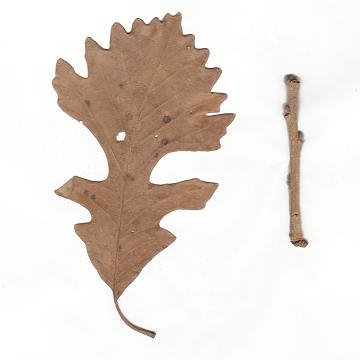

Quercus macrocarpa - (image 1 of 5)
Taxonomy
Family: Fagaceae
Habitat
Open woodlands. Highly fire tolerant and thought to have existed in prairies in presettlement times, forming "oak openings".
Associates
Distribution
New Brunswick and Quebec, west to Ontario and southern Manitoba, south to VA, LA, and TX.
Morphology
Deciduous tree to 120' high. Leaves alternate, simple, obovate, with 5-7 shallow, rounded lobes, usually with a pair of deep sinuses just below the middle; winter buds pubescent. Acorns sessile or on short, stout peduncles; nut dark brown; the cup large and shaggy and covering half to all of the nut. Bark gray-brown and heavily ridges vertically even when relatively young.
Notes
Flowers mid April to early June
Wetland indicator: Facultative -
Also called Mossy Cup Oak. Hybrids between this species and Q. bicolor are called Q. x schuettei Trel. Can occur as a low shrub to 5 m; this variety is called depressa (Nutt.) Engelm and occurs on dry upland and bluffs from western MN and IA, west to Saskatchewan, MT, and WY.
References
Gleason, Henry A. and A. Cronquist. 1991. Manual of Vascular Plants of Northeastern United States and Adjacent Canada. Second Ed.
The New York Botanical Garden. Bronx, NY
IDNR. December 1995. Common Illinois Trees
Illinois Department of Educational Services.
Swink, F. and G. Wilhelm. 1994. Plants of the Chicago Region.
Indiana Academy of Science. The Morton Arboretum. Lisle, Illinois.
|
Michael Hough © 2005 |